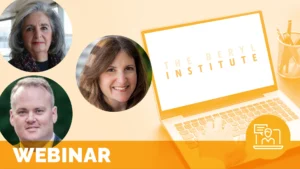The Value Case for Improving Human Experience in Healthcare

This white paper explores the concept of experience-driven value in healthcare and the corresponding value of experience. An expanded version of the article printed in PXJ Investing in the bottom line: The value case for improving human experience in healthcare, this paper provides real-world case studies and actionable strategies that demonstrate how true value is found in a coordinated and integrated focus on human experience. Ultimately, a commitment to experience is the path to realizing a viable and thriving future for healthcare organizations. A value case is not one solely about clinical outcomes but about the comprehensive healthcare experience through which a much broader set of outcomes is achieved.
Related content
-
 Culture & Leadership | Patient Family & Community Engagement
Culture & Leadership | Patient Family & Community EngagementApplying Equity, Diversity, and Inclusion in Co-design with Patient Experience Partners
Watch this webinar to learn about the Patient Experience Partner (PXP) Program at North York General Hospital (NYGH), a 480-acute care bed community academic hospital in Toronto, Ontario, Canada. The presenters will provide an overview of a specialized volunteer program for the purpose of informing hospital service design through the patient and caregiver lens. PXPs
Learn more -
 Culture & Leadership | Patient Family & Community Engagement | Staff & Provider Engagement
Culture & Leadership | Patient Family & Community Engagement | Staff & Provider EngagementPX Chat: Leading with Pride – Navigating Patient Experience in Today’s Political Climate
2pm ET / 1pm CT / 12pm MT / 11am PT – Join us for a special PX Chat hosted by The Beryl Institute, created specifically for members and allies of the LGBTQ+ community working in patient experience. This virtual gathering is a dedicated space to connect, reflect, and support one another as we navigate
Learn more -
 Culture & Leadership
Culture & LeadershipA Commitment to Experience Must Reach Across the Continuum of Care
A conversation on patient experience is not restricted to one care setting, nor should it be. People’s healthcare journeys are not singular instances, but most often a series of encounters that while perhaps separate operationally from the delivery side of care, all weave together to frame one experience for a patient, their family members and
Learn more
